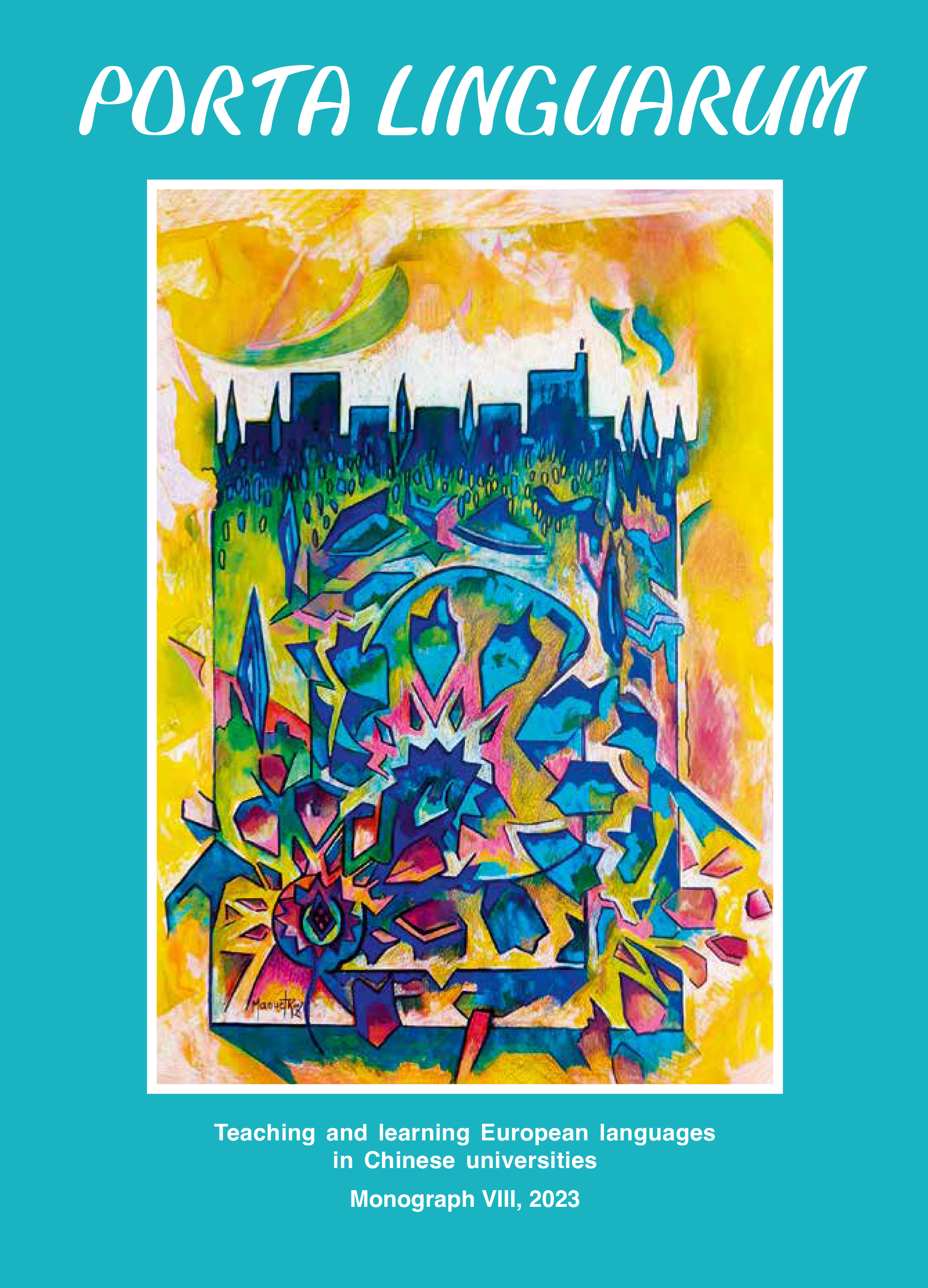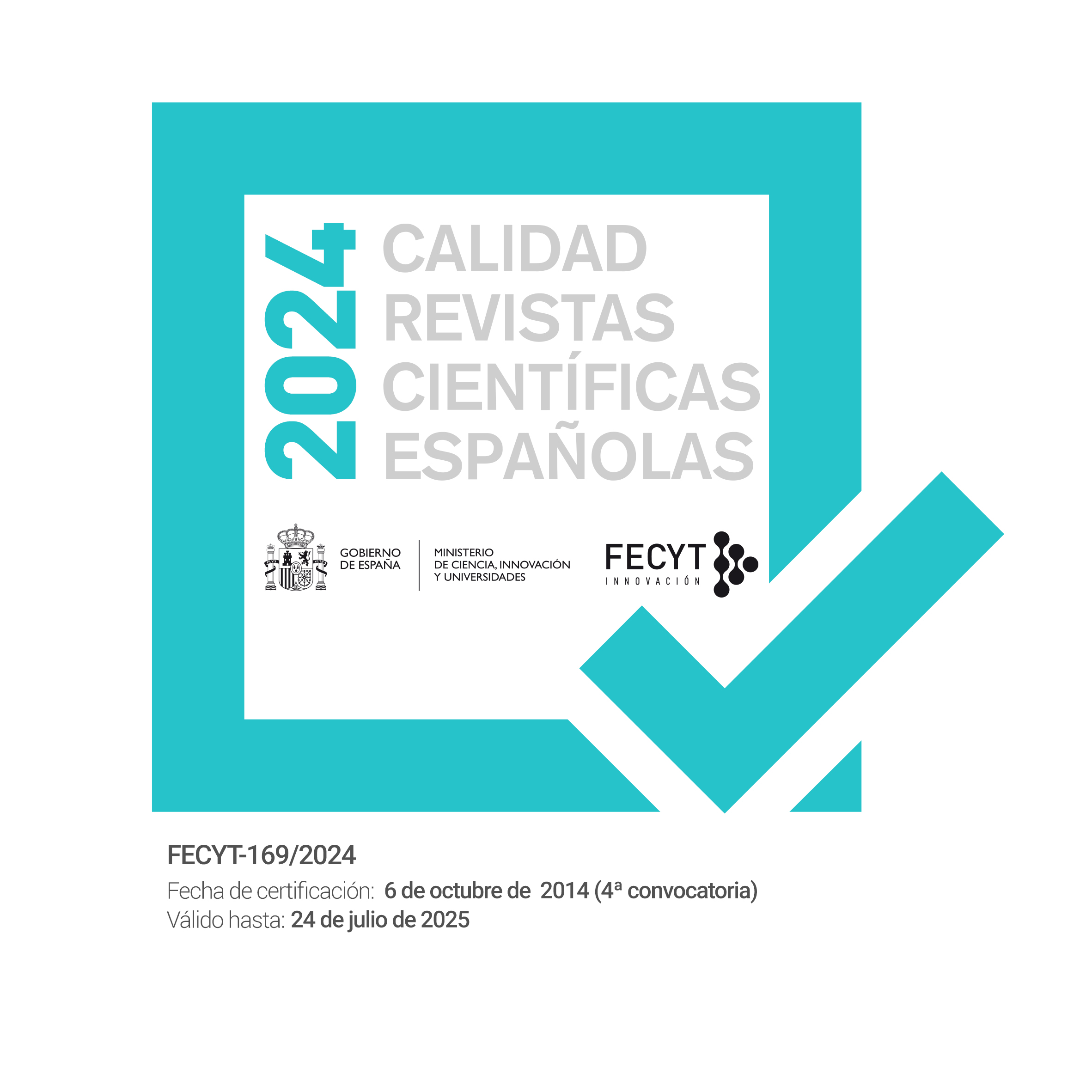Developing intercultural communicative competence in French-medium content and language integrated learning courses through teacher scaffolding
DOI:
https://doi.org/10.30827/portalin.viVIII.29236Keywords:
Content and Language Integrated Learning, intercultural communicative competence, teacher scaffolding, French learning, microgenesisAbstract
The increasing popularity of Content and Language Integrated Learning (CLIL) courses has attracted the attention of Chinese language educators. Many scholars have examined its functions of facilitating the development of content and language. However, intercultural communicative competence (ICC), as a core aspect of CLIL’s 4Cs (communication, content, cognition, and culture) framework, has been hardly analysed. Moreover, most studies on CLIL courses have been conducted in English-medium contexts, with scant attention paid to CLIL programs delivered in languages other than English. Drawing from sociocultural theory, this study aims to investigate how Chinese students develop ICC through teacher scaffolding in French-medium CLIL courses and their views on facilitating ICC in CLIL courses. The study collected data from a six-week classroom observation of twenty Chinese French-major undergraduates and interviews with seven of these students. The findings revealed that teacher scaffolding, i.e. explaining academic language, drawing on previous knowledge and linguistic scaffolding, helped to develop the participants' ICC. This research addresses the gap in understanding how teacher scaffolding can facilitate students' ICC development in a French-medium CLIL course, providing pedagogical guidance for CLIL teachers on how to promote ICC.
FUNDING INFORMATION. The study was funded by the Fundamental Research Funds for the Central Universities in China (1103-413000094) and Major Projects of China National Language Commission (ZDA145-2).
Downloads
References
An, J., Macaro, E., & Childs, A. (2019). Language focused episodes by monolingual teachers in English medium instruction science lessons. Journal of Immersion and Content-Based Language Education, 7(2), 166–191. https://doi.org/10.1075/jicb.18019.an.
Byram, M. (1997). Teaching and assessing intercultural communicative competence. Bristol: Multilingual Matters.
Byram, M., Gribkova, B., & Starkey, H. (2002). Developing the intercultural dimension in language teaching: A practical introduction for teachers. Strasbourg: Language Policy Division, Directorate of School, Out-of-School and Higher Education, Council of Europe.
Coyle, D. (1999). Theory and planning for effective classrooms: Supporting students in content and language integrated learning contexts. In J. Masih (ed.), Learning through a foreign language. London: CILT.
Coyle, D., Hood, P., & Marsh, D. (2010). CLIL: Content and language integrated learning. Cambridge: Cambridge University Press.
Dalton-Puffer, C. (2007). Discourse in content and language integrated learning (CLIL) classroom. Amsterdam: John Benjamins Publishing Company.
Doiz, A., Lasagabaster, D., & Sierra, J. M. (2014). CLIL and motivation: The effect of individual and contextual variables. The Language Learning Journal, 42(2), 209–224. https://doi.org/10.1080/09571736.2014.889508.
Gánem-Gutiérrez, G. A. (2007). Microgenesis, method and object: A study of collaborative activity in a Spanish as a foreign language classroom. Applied Linguistics, 29(1), 120–148. https://doi.org/10.1093/applin/amm032.
Gay, G. (2002). Preparing for Culturally Responsive Teaching. Journal of Teacher Education, 53(2), 106–116. https://doi.org/10.1177/0022487102053002003.
Gibbons, P. (2015). Scaffolding language, scaffolding learning: Teaching English language learners in the mainstream classroom (2nd ed.). Portsmouth, NH: Heinemann.
Ho, C., Kwai Yeok Wong, J., & Rappa, N. A. (2019). Supporting students’ content learning in biology through teachers’ use of classroom talk drawing on concept sketches. Journal of Immersion and Content-Based Language Education, 7(2), 233–260. https://doi.org/10.1075/jicb.18020.ho.
Hu, J., & Gao, X. (2020). Understanding subject teachers’ language-related pedagogical practices in content and language-integrated learning classrooms. Language Awareness, 30(1), 42–61. https://doi.org/10.1080/09658416.2020.1768265.
Li, D., & Zhang, L. (2020). Exploring teacher scaffolding in a CLIL-framed EFL intensive reading class: A classroom discourse analysis approach. Language Teaching Research, 26(3), 333–360. https://doi.org/10.1177/1362168820903340.
Li, D. (2017). Autonomy in scaffolding as learning in teacher-student negotiation of meaning in a university EFL classroom. Chinese Journal of Applied Linguistics, 40(4), 410–430. https://doi.org/10.1515/cjal-2017-0024.
Lin, A. M. Y. (2015). Conceptualising the potential role of L1 in CLIL. Language, Culture and Curriculum, 28(1), 74–89. https://doi.org/10.1080/07908318.2014.1000926.
Lin, A. M. Y. (2016). Language across the curriculum and CLIL in English as an additional language (EAL) contexts: Theory and practice. Singapore: Springer Singapore Pte. Limited.
Lin, A. M. Y., & He, P. (2017). Translanguaging as dynamic activity flows in CLIL classrooms. Journal of Language, Identity & Education, 16(4), 228–244. https://doi.org/10.1080/15348458.2017.1328283.
Lo, Y. Y., Lui, W., & Wong, M. (2019). Scaffolding for cognitive and linguistic challenges in CLIL science assessments. Journal of Immersion and Content-Based Language Education, 7(2), 289–314. https://doi.org/10.1075/jicb.18028.lo.
Lo, Y. Y., & Lin, A. M. Y. (2019). Teaching, learning and scaffolding in CLIL science classrooms. Journal of Immersion and Content-Based Language Education, 7(2), 151–165. https://doi.org/10.1075/jicb.00006.lo.
Little, D. (2007). Language learner autonomy: Some fundamental considerations revisited. Innovation in Language Learning and Teaching, 1(1), 14–29. https://doi.org/10.2167/illt040.0.
Mahan, K. R., Brevik, L. M., & Ødegaard, M. (2018). Characterizing CLIL teaching: New insights from a lower secondary classroom. International Journal of Bilingual Education and Bilingualism, 24(3), 401–418. https://doi.org/10.1080/13670050.2018.1472206.
Mahan, K. R. (2022). The comprehending teacher: Scaffolding in content and language integrated learning (CLIL). The Language Learning Journal, 50(1), 74–88. https://doi.org/10.1080/09571736.2019.1705879.
Martínez Agudo, J. D. (2019). Which instructional programme (EFL or CLIL) results in better oral communicative competence? Updated empirical evidence from a monolingual context. Linguistics and Education, 51, 69–78. https://doi.org/10.1016/j.linged.2019.04.008.
Méndez, M. C. (2013). The intercultural turn brought about by the implementation of CLIL programmes in Spanish monolingual areas: A case study of Andalusian primary and secondary schools. The Language Learning Journal, 41, 268–283. https://doi.org/10.1080/09571736.2013.836345.
Ohta, A. S. (2000). Rethinking interaction in SLA: Developmentally appropriate assistance in the zone of proximal development and the acquisition of L2 grammar. In J. P. Lantolf (Ed.), Sociocultural theory and second language learning (pp. 51–78). Oxford: Oxford University Press.
Pawan, F. (2008). Content-area teachers and scaffolded instruction for English language learners. Teaching and Teacher Education, 24(6), 1450–62. https://doi.org/10.1016/j.tate.2008.02.003.
Pérez-Gracia, E., Serrano-Rodríguez, R., & Carpio, A.J. (2020). Bilingualism and interculture: What are teachers doing? (Bilingüismo e intercultura: ¿qué están haciendo los docentes?). Culture and Education, 32(4), 621–648. DOI:10.1080/11356405.2020.1819119.
Roiha, A., & Sommier, M. (2018). Viewing CLIL through the eyes of former pupils: Insights into a foreign language and intercultural attitudes. Language and Intercultural Communication, 18(6), 631–647. https://doi.org/10.1080/14708477.2018.1465069
Van de Pol, J., Volman, M., & Beishuizen, J. (2010). Scaffolding in teacher-student interaction: A decade of research. Educational Psychology Review, 22(3), 271–296. https://doi.org/10.1007/s10648-010-9127-6.
Vygotsky, L. S. (1978). Mind in society. Cambridge, MA: Harvard University Press.
Yang, W. (2021). Developing intercultural competence: A comparison of CLIL and language majors before and after industrial placements. In C. Hemmi & D. L. Banegas (Eds.), International perspectives on CLIL. International Perspectives on English Language Teaching. Cham: Palgrave Macmillan. https://doi.org/10.1007/978-3-030-70095-9_7.
*****
FUNDING INFORMATION. The study was funded by the Fundamental Research Funds for the Central Universities in China (1103-413000094) and Major Projects of China National Language Commission (ZDA145-2).



















